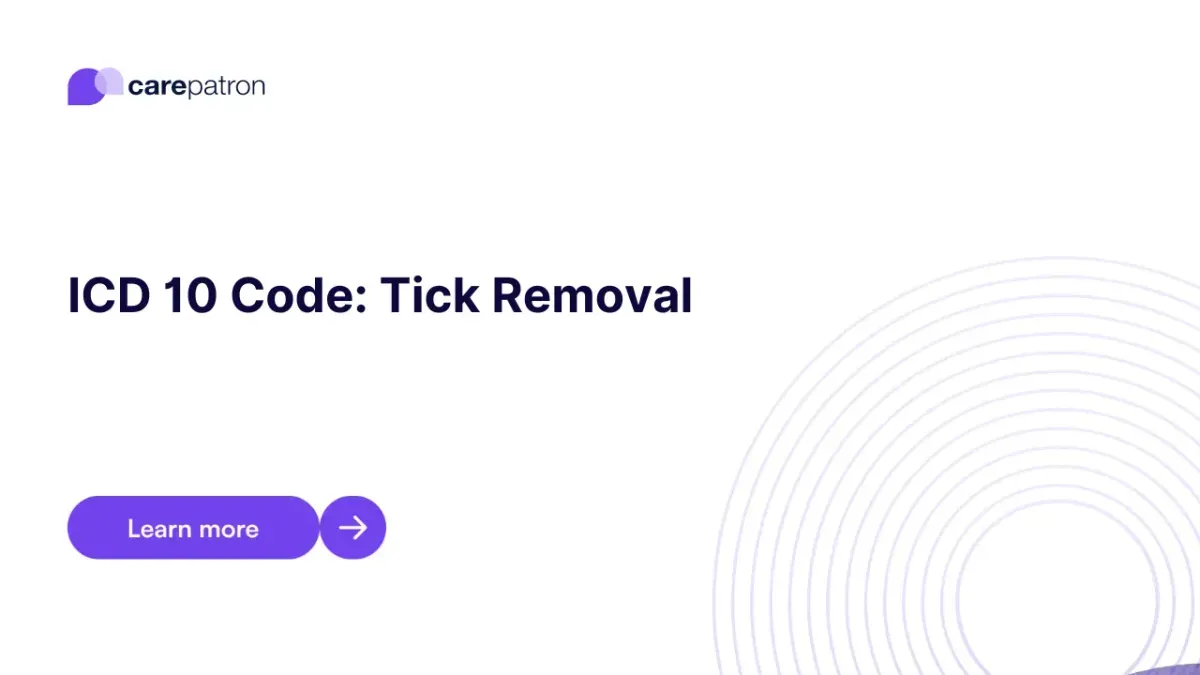
Tick Removal ICD-10-CM Codes
Learn more about the essential ICD-10 codes used for tick removal, their clinical significance, and more.
Use Code
Commonly asked questions
A tick removal-related ICD code should be used whenever a healthcare provider needs a diagnosis prior to removing the tick.
Common treatments include:
- Physically hygienically removing the tick.
- Treating related symptoms such as rash or fever, and in some cases.
- Prescribing antibiotics to prevent tick-borne diseases.
A diagnosis code for tick removal provides specific information about the patient's condition, such as the type of tick-borne disease or the location of the tick bite. This information is used for billing purposes and to track and analyze disease prevalence.
EHR and practice management software
Get started for free
*No credit card required
Free
$0/usd
Unlimited clients
Telehealth
1GB of storage
Client portal text
Automated billing and online payments
